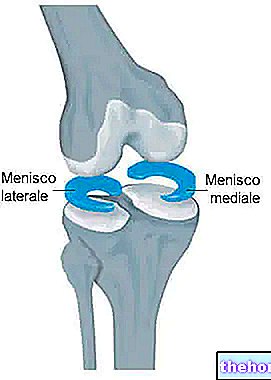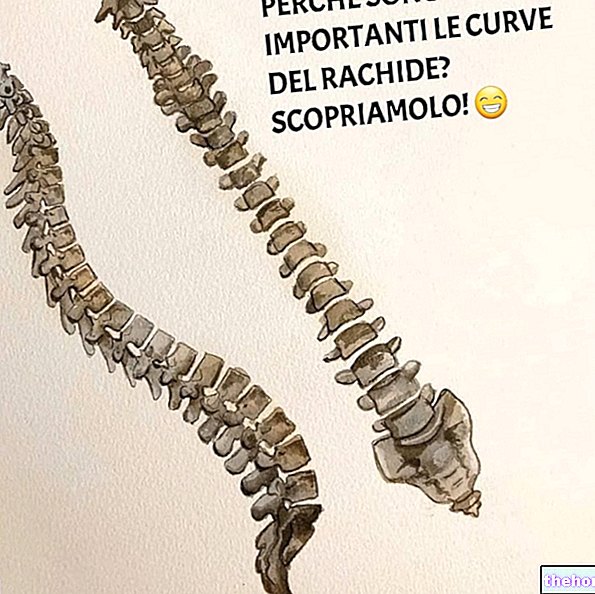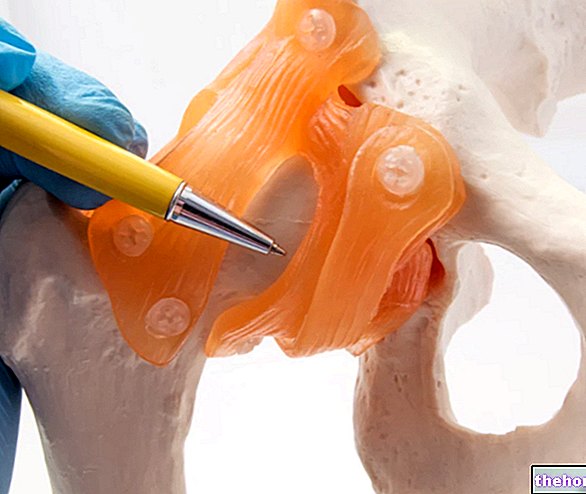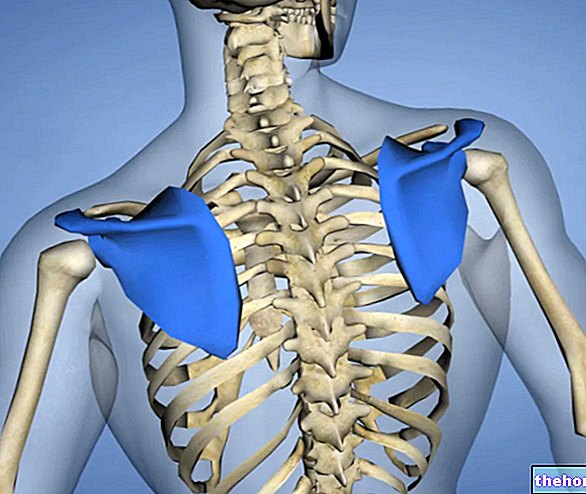By doctor Francesco Casillo
And we come, in conclusion, to the relationships between exogenous testosterone intake and health problems, such as heart problems, obesity, inflammation, insulin resistance and diabetes.

Jones and Saad observed the association between low testosterone levels and i markers for ASCVD, as well as the effects induced by testosterone replacement therapy. Low (natural) testosterone levels are unhealthy. Men with low testosterone levels are at high risk for coronary heart disease (CHD), heart attacks and angina. When hypogonadal men (with low testosterone levels) are treated with the male sex steroid there are positive changes associated with a lower risk of CHD. These include: reduction of visceral obesity and insulin resistance, improvement of lipid profile and markers inflammation and improvement in exercise capacity.
An increased risk of myocardial infarction is linked to a number of conditions: smoking, hypertension, high LDL levels, malnutrition, sedentary lifestyle, abdominal-visceral obesity and diabetes. Many of these conditions are related to a low quality lifestyle. In 1981 a constellation of health problems was described as "Metabolic Syndrome". This condition includes: abdominal-visceral obesity, high level of triglycerides and total cholesterol, low HDL levels, hypertension, high fasting glycemic levels. Not all these alterations must necessarily coexist at the same time in the individual, since he can be diagnosed with the Metabolic Syndrome.
Partly also due to the radical change in lifestyle from the 1970s until now, the conditions that make the Metabolic Syndrome possible have progressively increased.In parallel with this, the average testosterone levels, for the same period of time taken into consideration, have also been decreasing. In fact, obesity negatively affects the health of the individual, and this is especially true at the level of heart health. Studies that have analyzed the relationship between obesity and testosterone have shown a negative correlation.
The higher the systemic concentration of testosterone in an individual, the less likely they are to become obese. Conversely, the more obese you are, the lower your testosterone levels will be. Even more convincing are the results showing that a low testosterone concentration is associated with an increased level of abdominal-visceral obesity, as well as a higher percentage of body fat and higher insulin levels. High insulin levels, remember, promote lipogenesis (fat storage) and inhibit lipolysis (destruction of triglycerides).
Body fat and testosterone present a sort of relationship similar to the (proverbial) one of the "chicken and the" egg ": sometimes it is impossible to determine which of the two conditions originates first and, therefore, who generates the second. it stimulates the receptors that reduce the accumulation of fat, increasing lipolytic phenomena as well as diverting the precursors of adipocytes into becoming myocytes rather than mature adipocytes.
Adipocytes are not cells specialized solely in the storage of triglycerides and the release of fatty acids, but they represent a real endocrine system capable of secreting hormones and messengers. Among the messengers there are two cytokines (precisely adipocytokines): resistin and adiponectin.
Resistin increases insulin resistance and inflammation (two conditions that lead to type 2 diabetes, ASCVD and all other diseases related to inflammation itself). Adiponectin, on the other hand, plays a protective role and its secretion increases with decreasing levels of fat and / or in correspondence with limited values of fat; the increase in body fat determines, on the other hand, a decrease in the levels of adiponectin and the simultaneous rise in the levels of other inflammatory adipocytokines.
Insulin resistance and type 2 diabetes are important factors to consider when assessing the risk of myocardial infarction. There is, in fact, an inverse relationship between testosterone levels and insulin resistance and between testosterone and type 2 diabetes. Low testosterone levels are the prelude to the development of type 2 diabetes. As testosterone levels decrease, insulin resistance increases; this causes the body to maintain high insulin levels for obvious homeostatic reasons on glycemic control. If the insulin levels remain high in the long term, the weight loss processes are less, while those that favor an increase in fat mass are strong.
Treatment of type 2 diabetes with testosterone reduces blood glucose and insulin resistance, which is also a beneficial factor in reducing the risk of heart attack in those prone to this condition. Another marker, hemoglobin A1C (HA1C), undergoes a decrease in correspondence with testosterone-based therapy.
Only recently has the collaboration of specialized agencies changed the way diabetes is diagnosed. The diagnosis of diabetes has always been a function of measuring fasting glycemic levels, through the test tolerance to oral glucose load. Such test evaluates and takes into account how the body is able to manage glycemic availability in the short term. Now, however, measuring HA1C allows you to monitor long-term glycemic control.
The mechanism of action within which testosterone would act in the decrease of insulin resistance would be represented by its action in favoring the decrease of visceral fat levels, the event of which determines a decrease in inflammatory processes and in the flow of fatty acids towards the liver - thus inducing a reduction in fat mass and a simultaneous improvement in mitochondrial function.
As mentioned, when the testosterone level decreases, its inhibitory role on adipocytes is lost, thus allowing an increase in fat mass. Unfortunately, the worst is yet to come. As the levels of fat mass increase, the availability of the enzyme “aromatase”, responsible for the conversion of testosterone into estrogen, also increases, thus leading to a negative vicious circle.
In fact, estrogens not only favor the processes of adipose accumulation but in metabolic concert with two adipocytokines and leptin reduce the sensitivity of the chemoceptive system of the hormonal axis HPT (Hypothalamus-Pituitary-Testicles) to low testosterone levels, thus inducing, inhibition of the feedback positive of the same axis in response to low levels of circulating hormone. This leads to the procrastination of low testosterone levels which fuel a vicious cycle in favor of increased levels of obesity and insulin resistance.
A study. In a study a few years ago, 87 male individuals with diabetes and coronary artery disease were "randomized" to 12 weeks of treatment with testosterone undecanoate or placebo, within a "double-blind" protocol. of the intervention, weekly and at the end of the intervention itself: the angina episodes, the number of daily ischemic episodes and the total ischemic load by ECG Holter. Total serum cholesterol levels and blood triglyceride concentrations were also measured.
Results: Compared to the placebo group, the testosterone group reported a 34% reduction in weekly angina episodes; reduction of silent ischemic episodes by 26% and total ischemic load by 21%. Furthermore, after 12 weeks, total cholesterol and triglyceride levels also decreased in the testosterone group compared to the placebo group. Thus, in this case, the therapeutic use of testosterone was positive.
Conclusions
It is disheartening to learn how much of "mass knowledge" is the result of passively acquired information, due to the credit attributed to the repetitiveness with which such "information" is served up, rather than to the "reliability of the same. Reliability that derives from scientific analyzes scrupulous, critical and selective, capable of refuting what is incorrect, or that in a completely altered "socio-cultural" way is spread and propagated and which over time becomes "dogma." Only then can science finally affirming - rightly - one's own truth, and thus founding one's own culture of truth.
The task of the correct disseminators, at every level and in each specific area, is precisely to spread these scientific truths - denying all pseudo-truths. Stay hard!
Article courtesy of the "Cultura Fisica" magazine
Bibliographical references
1) Heaney R.P., Recker R.R. - "Effects of nitrogen, phosphorus, and caffeine on calcium balance in women", J Lab Clin Med 99: 46-55, 1982.
2) Kerstetter J.E., Allen L.H. - "Dietary protein in- creases urinary calcium", J Nutr. 120: 134-136, 1990. 3) Kerstetter J.E., O "Brien K.O., Insogna K.L. - "Dietary protein affects intestinal calcium absorption", Am J Clin Nutr 68: 859-865, 1998.
4) Kerstetter J.E., Caseria D.M., Mitnick M.E. et al. -
"Increased circulating concentrations of parathyroid hormone in healthy, young women consuming a protein-restricted diet", Am J Clin Nutr.
5) Roughead Z.K., Johnson L.K., Lykken G.I. et al. - "Controlled high meat diets do not affect calcium retention or indices of bone status in healthy post-menopausal women", J Nutr. 133: 1020-1026, 2003. 6) Dawson-Hughes B., Harris S.S., Rasmussen H. et al. - "Effect of dietary protein supplements on calcium excretion in healthy older men and women", J Clin Endocrinol Metab 89: 1169-1173, 2004.
7) Cao J.J., Johnson L.K., Hunt J.R. - “A diet high in
meat protein and potential renal acid load increases fractional calcium absorption and urinary calcium excretion without affecting markers of bone resorp- tion or formation in postmenopausal women ", J Nutr. March 1, 2011 vol. 141 n. 3, 391-397.
8) Metges C.C., Barth C.A. - "Metabolic consequences of a high dietary-protein intake in adulthood: assessment of the available evidence", J Nutr. 2000; 130: 886-889.
9) Brenner B.M., Meyer T.W., Hostetter T.H. - "Di- etary protein intake and the progressive nature of kidney disease: the role of hemodynamically medi- ated glomerular injury in the pathogenesis of progressive glomerular sclerosis in aging, renal ablation, and intrinsic renal disease", N Engl J Med. 1982; 307: 652-659.
10) Layman D.K., Boileau R.A., Erickson D.J. et al. -
"A reduced ratio of dietary carbohydrate to protein improves body composition and blood lipid profiles during weight loss in adult women", J Nutr. 2003; 133: 411-417.
11) Fine E.J., Feinman R.D. - "Thermodynamics of weight loss diets", Nutr Metab (Lond) 2004; 1:15. doi: 10.1186 / 1743-7075-1-15.
12) Skov A.R., Toubro S., Ronn B. et al. - "Rand-omized trial on protein vs carbohydrate in ad libitum fat reduced diet for the treatment of obesity", Int J Obes Relat Metab Disord. 1999; 23: 528-536.
13) Food and Nutrition Board. Institute of Medicine Dietary Reference Intakes for Energy, Carbohydrate, Fiber, Fat, Fatty Acids, Cholesterol, Protein, and Amino Acids (Macronutrients) Washington, D.C., The National Academies Press; 2002. Macro-nutrient and Healthful Diets; pp. 609-696.
14) Levey A.S., Coresh J., Balk E. - "National Kidney Foundation practice guidelines for chronic kidney disease: evaluation, classification, and stratification",
Ann Intern Med. 2003; 139: 137-147.
15) Conrad K.P., Novak J., Danielson L.A. et al. - "Mechanisms of renal vasodilation and hyperfiltration during pregnancy: current perspectives and potential implications for preeclampsia", Endothe- lium, 2005; 12: 57-62.
16) Conrad KP. - "Mechanisms of renal vasodilation and hyperfiltration during pregnancy", J Soc Gynecol Investig. 2004; 11: 438-448.
17) Calderon J.L., Zadshir A., Norris K. - "A survey of kidney disease and risk-factor information on the World Wide Web", Med Gen Med. 2004; 6: 3.
18) Sugaya K., Ogawa Y., Hatano T. et al. - "Compensatory renal hypertrophy and changes of renal function following nephrectomy", Hinyokika Kiyo, 2000; 46: 235-240.
19) Higashihara E., Horie S., Takeuchi T. et al. - "Long-term consequence of nephrectomy", J Urol. 1990; 143: 239-243.
20) Regazzoni B.M., Genton N., Pelet J. et al. - "Long-term followup of renal functional reserve capacity after unilateral nephrectomy in childhood", J Urol. 1998; 160: 844-848.
21) Lentine K., Wrone E.M. - "New insights into protein intake and progression of renal disease", Curr Opin Nephrol Hypertens. 2004; 13: 333-336.
22) Knight E.L., Stampfer M.J., Hankinson S.E. et al. - "The impact of protein intake on renal function decline in women with normal renal function or mild renal insufficiency", Ann Intern Med. 2003 Mar 18; 138: 460-7.
23) Young V.R., El-Khoury A.E., Raguso C.A. - "Rates
of urea production and hydrolysis and leucine oxida- tion change linearly over widely varying protein in- takes in healthy adults ", J Nutr. 2000; 130: 761-766. 24) Bankir L., Bouby N., Trinh-Trang-Tan M.M. et al. - "Direct and indirect cost of urea excretion", Kidney Int. 1996; 49: 1598-1607.
25) AtkinsExposed.org website http: // www. atkinsexposed.org/atkins/79/American_Kidney_ Fund.htm.
26) Martin W.F., Armstrong L.E., Rodriguez N.R. - "Dietary protein intake and renal function", Nutr Metab (Lond). 2005; 2: 25.
27) Calloway D.H., Spector H. - "Nitrogen balance as related to caloric and protein intake in active young men", Am J Clin Nutr. 1954; 2: 405-412.
28) Luscombe N.D., Clifton P.M., Noakes M. et al. - "Effect of a high-protein, energy-restricted diet on weight loss and energy expenditure after weight stabilization in hyperinsulinemic subjects", Int J Obes Relat Metab Disord. 2003; 27: 582-590.
29) Brinkworth G.D., Noakes M., Keogh J.B. - "Long-term effects of a high-protein, low-carbohydrate diet on weight control and cardiovascular risk markers in obese hyperinsulinemic subjects", Int J Obes Relat Metab Disord. 2004; 28: 661-670.
30) Johnston C.S., Tjonn S.L., Swan P.D. - "High-protein, low-fat diets are effective for weight loss and favorably alter biomarkers in healthy adults", J Nutr. 2004; 134: 586-591.
31) Layman D.K., Baum J.I. - "Dietary protein impact
on glycemic control during weight loss ", J Nutr. 2004; Suppl 4: 968-973.
32) Stern L., Iqbal N., Seshadri P. - "The effects of low-carbohydrate versus conventional weight loss diets in severely obese adults: one-year follow-up of a rand-omized trial", Ann Intern Med. 2004; 140: 778-785. 33) Skov A.R., Toubro S., Bulow J. - "Changes in renal function during weight loss induced by high vs low-protein low-fat diets in overweight subjects", Int J Obes Relat Metab Disord. 1999; 23: 1170-1177.
34) Boden G., Sargrad K., Homko C. et al. - "Effect of a low-carbohydrate diet on appetite, blood glucose levels and insulin resistance in obese patients with type 2 diabetes", Ann Intern Med. 2005; 142: 403-411.
35) Lemon P.W. - "Is increased dietary protein necessary or beneficial for individuals with a physically active lifestyle?", Nutr Rev. 1996; 54: S169-75.
36) Poortmans J.R., Dellalieux O. - "Do regular high protein diets have potential health risks on kidney function in athletes?", Int J Sport Nutr Exerc Metab. 2000; 10: 28-38.
37) Wasserstein A.G., Stolley P.D. et al. - "Case-control study of risk factors for idiopathic calcium nephrolithia- sis", Miner Electrolyte Metab. 1987; 13: 85-95.
38) Robertson W.G., Heyburn P.J. et al. - "The effect of high animal protein intake on the risk of calcium stone- formation in the urinary tract", Clin Sci (Lond) 1979; 57: 285-288.
39) Reddy S.T., Wang C.Y. et al. - "Effect of low-car-bohydrate high-protein diets on acid-base balance, stone-forming propensity, and calcium metabolism",
Am J Kidney Dis. 2002; 40: 265-274.
40) Hess B. - "Nutritional aspects of stone disea-
self", Endocrinol Metab Clin North America 2002; 31: 1017-30, ix-x.
41) Raj G.V., Auge B.K. et al. - "Metabolic abnormalities associated with renal calculi in patients with horseshoe kidneys", J Endourol. 2004; 18: 157-161.
42) Nguyen Q.V., Kalin A. et al. - "Sensitivity to meat protein intake and hyperoxaluria in idiopathic calcium stone formers", Kidney Int. 2001; 59: 2273-2281.
43) Palmer B.F. - "Disturbances in renal autoregulation and the susceptibility to hypertension-induced chronic kidney disease", Am J Med Sci. 2004; 328: 330-343.
44) Vupputuri S., Batuman V. et al. - "Effect of blood pressure on early decline in kidney function among hypertensive men", Hypertension, 2003; 42: 1144- 1149.
45) Wright J.T.J., Bakris G. et al. - "Effect of blood pressure lowering and antihypertensive drug class on progression of hypertensive kidney disease: results from the AASK trial", Jama. 2002; 288: 2421-2431.
46) Peterson J.C., Adler S. et al. - "Blood pressure control, proteinuria, and the progression of renal disease. The modification of diet in renal disease study ", Ann Intern Med. 1995; 123: 754-762.
47) Zhou B.F., Wu X.G. et al. - "Dietary patterns in 10 groups and the relationship with blood pressure. Collaborative study group for cardiovascular diseases and their risk factors ", Chin Med Journal (Eng) 1989; 102: 257-261.
48) He J., Klag M.J. et al. - "Dietary macronutrients and blood pressure in southwestern China", J Hypertens. 1995; 13: 1267-1274.
49) Burke V., Hodgson J.M. et al.- "Dietary protein and soluble fiber reduce ambulatory blood pressure
in treated hypertensives ", Hypertension, 2001; 38: 821-826.
50) Tan R.S., Salazar J.A. - "Risks of testosterone repla- cement therapy in aging men", Expert Opin Drug Saf, 2004; 3: 599-606.
51) Huggins C., Hodges C.V. - "Studies on prostatic cancer, I: the effect of castration, of estrogen and of androgen injection on serum phosphatases in meta-static carcinoma of the prostate", Cancer Res, 1941; 1: 293-7.
52) Morgentaler A. - "Testosterone and prostate cancer: an historical perspective on a modern myth", European Urology, 2006; 50: 935-9.
53) Huggins C. - "Endocrine-induced regression of cancer", Cancer Res 1967; 27: 1925-30.
54) National Cancer Institute - "Surveillance, epidemiology and end results program 1975-2002", Division of Cancer Control and Population Sciences, 2005.
55) Travision T.G., Araujo A.B. et al. - "A population- level decline in serum testosterone levels in American Men", J Clin Endocrinol Metab, 2006 Oct 24.
56) Raynaud J.P. - "Prostate cancer risk in testosterone- treated men", J Steroid Biochem Mol Biol, 2006; 102: 261-6.
57) Morgentaler A., Bruning C.O. 3rd et al. - "Occult prostate cancer in men with low serum testosterone levels", JAMA, 1996; 276: 1904-6.
58) San Francisco I.F., Regan M.M., et al. - "Low age adjusted free testosterone levels correlated with poorly differentiated prostate cancer", J Urol, 2006; 175: 1341-5.
59) Isom-Batz G., White Jr F.J. et al. - "Testosterone as a predictor of pathological stage in clinically localized prostate cancer", J Urol, 2005; 173: 1935-7.
60) Marks L.S., Mazer N.A. et al. - “Effect of testosterone replacement therapy on prostate tissue in men
with late-onset hypogonadism- a randomized control- led trial ", JAMA, 2006; 296: 2351-61.
61) Severi G., Morris H.A. et al. - "Circulating steroid hormones and the risk of prostate cancer", Cancer Epidemiol Biomarkers Prev, 2006; 15: 86-91.
62) Van Haarst E.P., Newling D.W.W. et al. - "Meta-static prostatic carcinoma in a male-to-female trans- sexual", Brit Jour Urol, 1998; 81: 776.
63) Prehn R.T. - "On the prevention and therapy of pro- state cancer by androgen administration", Cancer Res, 1999; 59: 4161-4.
64) Algarte-Genin M., Cussenot O. et al. - "Prevention of prostate cancer by androgens: experimental paradox or clinical reality", Eur Urol, 2004; 46: 285-95.
65) Pipe A. - “Structured Critical Review. Anabolic Steroid-Induced Hepatotoxicity " by Dickerson et al. Clin J Sports Med. 1999; 9: 34-39, Clin Jour Sport Med. 2000; 10: 78.
66) Shalender A., Woodhouse L. et al. - "Testosterone dose-response relationships in healthy young men", Am J Physiol Endocrinol Metab 281: 1172-1181, 2001.
67) Sattler et al. - "Metabolic effects of nan-drolone decanoate and resistnace training in men with HIV", Am J Physiol Endocrinol Metab 283: 1214-1222.
68) Gardner C.D., Fortmann S.P. et al. - "Small low density lipoprotein particles are associated with the incidence of coronary artery disease in men and women", JAMA 1996; 276: 875-881.
69) Lamarche F., Tchernof A. et al. - "Small, dense low-density lipoprotein particles as a predictor of the risk of ischemic heart disease in men", Circulation, 1997; 95: 69-75.
70) Cornoldi A., Caminiti G. et al. - "Effects of chronic testosterone administration on myo- cardial ischemia, lipid metabolism and insulin resistance in elderly male diabetic patients with coronary artery disease", International Journal Cardiol, Apr 8 2009.
71) Yeap B.B., Hyde Z. et al. - "Lower testoster- one levels predict incident stroke and transient ischemic attack in older men", J Clin Endocrinol Metab, Apr 7 2009.
72) Hyerang K., Saningun L. et al. - "Metabolic responses to high protein diet in Korean elite body-builders with high intensity resistance exercise", Ryowon Choue Journal of the International society of sports nutrition.
73) Jones T.H., Saad F. - "The effects of testosterone on risk factors for, and mediators of, the atherosclerotic process", Atherosclerosis, 2009 Apr 24.
74) Yusuf S., Hawken S. et al. - "Effect of potentially modifiable risk factors associated with myocardial infarction in 52 countries (the Interheart study): case control study", Lancet, 2004 Sep 11-17; 364: 937-952.
75) Travision T.G., Araujo A.B. et al. - "A population-level decline in serum testosterone levels in American men", J Clin Endocrinol Metab, 2007 Jan; 92: 196-202.
76) Goncharov N.P., Katsya G.V. et al. - "Testos- terone and obesity in men under the age 40 of years", Andrology, 2009 Apr; 41: 76-83.
77) Stanworth R.D., Jones T.H. - "Teostosterone in obesity, metabolic syndrome and type 2 diabetes", Front Horm Res, 2009; 37: 74-90.
78) De Pergola G. - "The adipose tissue metabolism: role of testosterone and dehydroepiandrosterone", Int Journ Obes Relat Metab Disord, 2000 Jun; 24 Suppl 2: S59-63.
79) Rice D., Brannigan R.E. et al. - "Men" s health, low testosterone, and diabetes, individualized treatment and a multidisciplinary approach ", Diabetes Educ, 2008 Nov-Dec; 34 Suppl 5: 97S-112S.
80) Haffner S.M., Shaten J. et al. - "Low levels of sex hormone-binding globulin and testosterone predict the development of non-insulin-depend- ent diabetes mellitus in men", MRFIT Research Group, Multiple Risk Factor Intervention Trial, AM J Epidemiol, 1996 May 1; 143: 889-897.
81) Boyanov M.A., Boneva Z. et al. - "Testoster- one supplementation in men with type 2 diabetes, visceral obesity and partial androgen deficiency",
Aging Male, 2003 Mar; 6: 1-7.
82) Kapoor D., Goodwin E. et al. - "Testosterone replacement therapy improves insulin resistance, glycaemic control, visceral adiposity and hypercho- lesterolemia ion hypogonadal men with type 2 dia- betes", Eur J Endocrinol, 2006 Jun; 154: 899-906.
83) The International Expert Committee Report on the Role of the A1C Assay in the Diagnosis of Diabetes.
84) Belanger C., Luu-The V. et al. - "Adipose tis- sue intracrinology: potential importance of local androgen / estrogen metabolism in the regulation of adiposity", Horm Metab Res, 2002 Nov-Dec; 34 (11-12): 737-745.
85) Schroeder et al. - "Effects of an oral androgen on muscle and metabolism in older, community- dwelling men", Am J Physiol Endocrinol Metab 284: E120-28.
86) Businaro R., Ippoliti F. et al. - "Alzheimer's Dis- ease Promotion by Obesity: Induced Mechanisms, Molecular Links and Perspectives", Current Ger- ontology and Geriatrics Research Volume 2012, review article.
Other articles on "Testosterone and health problems"
- High Transaminases in Sports and Liver Health
- High-protein diet and loss of bone mineral
- High-protein diet and kidney damage
- High Testosterone and Prostate Cancer Risk
- High Transaminases in Sports and Liver Health




























